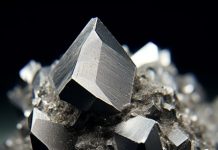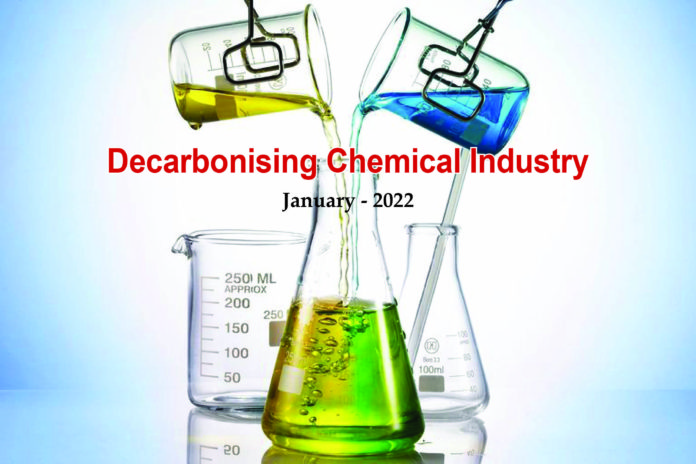The chemical industry is the third largest emitter of carbon dioxide after steel and cement and accounts for 6% of the global GHG emissions. Direct carbon dioxide emissions from primary chemical production were 920 million tonnes in 2020. The demand for chemicals and materials is estimated to quadruple by 2050 compared to 2010. This explosive growth in demand has to be aligned with the net-zero commitments of various nations. IEA estimates that emissions from primary chemical production must decline by 10% by 2030 in order to be on target for 1.8 degrees C warming. Renewable energy will be the key enabler for decarbonising the chemical industry. There are three broad strategies for decarbonising the chemical industry. First is to improve energy efficiency. This appears to have been almost fully exploited already and going forward is not expected to play a major role. Second strategy is to use renewable energy. The success of this hinges on the reliability and availability at low cost. Third approach is to capture the carbon dioxide generated and sequestrate it in a natural sink or better still use it as a feedstock.
LCET
World Economic Forum launched the Low-Carbon Emitting Technologies (LCET) initiative in 2019 with the mandate of accelerating GHG reduction in the chemical industry and its entire value chain. It is designed to foster collaborations and partnerships to collectively solve challenges faced by the industry on its path to carbon neutrality. The initiative now plans to shift from a knowledge sharing platform to an implementation vehicle in 2023. The LCET member companies will embark along two value chains that are the biggest GHG emitters in the chemical industry – ethylene production by steam cracking and ammonia production by steam reforming.
Ethylene
Ethylene, the basic building block for petrochemical industry, is produced by steam cracking of hydrocarbons at temperatures in excess of 850 degrees Celsius. The energy required for the process is generated by combustion of fossil fuel. For every tonne of ethylene produced, 1.5 tonne of carbon dioxide is released. 260 million tonnes of carbon dioxide is released during manufacture of ethylene globally, accounting for 0.8% of the total emissions. The race to make the process carbon-neutral is currently underway with three different consortia working on substituting fossil fuel with electricity.
Cracker of the Future
Six leading chemical companies – BASF, Borealis, BP, LyondellBasell, SABIC and Total – came together to establish “The Cracker of the Future Consortium” with the objective of transitioning from fossil fuel to renewable electricity. However, subsequently BASF and SABIC have left the consortium. In the first phase of the project, the consortium members identified various technologies available for electric heating, each with its own merits and limitations. After an early assessment, some five concepts were handpicked for further consideration and deep-dives. At the end of the first phase, BASF and SABIC decided to leave the consortium and launch an independent collaboration. They have been replaced by two other companies – Repsol and Versalis. The consortium’s collaborative work is being facilitated by Brightlands Chemelot Campus in Netherlands. Though the consortium has not announced any roadmap, the market buzz is that a prototype will be available for demonstration in 2023 and commercialisation could happen in 2026. The development costs have been bracketed in the range of 30-50 million Euros.
BASF-SABIC
Meanwhile, BASF and SABIC which quit the six company consortium citing conflict of interest have partnered with Linde to develop their own version of electric cracker. The partnership claims to have developed novel electrical heating concepts including key items of hardware. They are hopeful of setting up a demonstration plant in 2023 at the Ludwigshafen site of BASF where two steam crackers are already operating. Commercialisation is likely by 2027. The electricity for this will be sourced from a new 2 GW offshore windfarm that is in planning stage. When completed, this will power not only the ethylene cracker, but also electrify all the chemical processes that are currently using fossil fuels. The outcome and timeline is largely dependent on the extent of funding support available from EU and the German government.
Dow-Shell
The third e-cracking project is a joint venture between Dow and Shell. Announced in June 2020, this partnership has now joined hands with The Netherlands Organisation for Applied Scientific Research (TNO) and the Institute for Sustainable Process Technology (ISPT). The two new collaborators are expected to accelerate key milestones in the project. TNO brings to the table deep knowledge of high-temperature heat transfer. Multidisciplinary teams are pooling together their expertise in metallurgy, electrical design, Computational Fluid Dynamics and other areas. Though the project has blessings and financial backing from Netherlands government, a demonstration plant is unlikely before 2025.
RDR Technology
Coolbrook, a Finnish-Dutch start-up offers a radically different technology for production of ethylene. Borrowing ideas from space programme and using principles of Process Intensification, the technology uses a Roto Dynamic Reactor (RDR) to deliver the energy required for cracking in a novel way. The feedstock is introduced into the reactor where it is churned at very high speeds of up to 20000 rpm by a specially designed rotor. The supersonic speed creates shockwaves, raising the feedstock to cracking temperatures. Besides completely eliminating carbon dioxide, the technology claims many other advantages. The residence time is shorter than in traditional crackers resulting in 20% higher yields of ethylene. The overall specific energy consumption of the process is thus lower by as much as 30%. The propensity to coking is less, leading to higher on-stream time. The company is currently in the process of setting up a large scale pilot plant and plans to go commercial in 2025.
Electrochemical Route
An alternative approach to decarbonising ethylene production is by using carbon dioxide as feedstock. It is possible to electrochemically reduce carbon dioxide to ethylene using hydrogen ions generated from water at the anode. Copper-based catalysts have been used to promote the electrochemical reduction. Much work needs to be done to improve the activity and long-term stability of the catalyst. Brazilian petrochemical company, Braskem, is partnering with University of Illinois, Chicago to develop the electrochemical route and are optimistic about producing a prototype reactor soon.
Epilogue
The electrification of ethylene cracker is fraught with many technical challenges, but still appears ripe for an earlier resolution than the electrochemical route. Multiple e-cracker projects involving collaboration between industry giants augurs well for an early breakthrough. Innovative low-carbon technologies don’t come cheap for the chemical industry. They cannot easily substitute fossil fuel based technologies without an adequate regulatory framework. Governments should provide generous support through subsidies and incentives
Readers’ responses may be sent to:
k.sahasranaman@gmail.com or
chemindigest@gmail.com
































